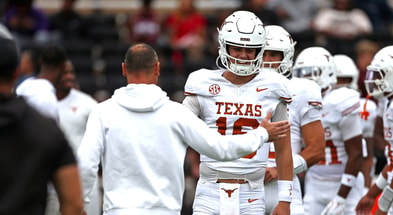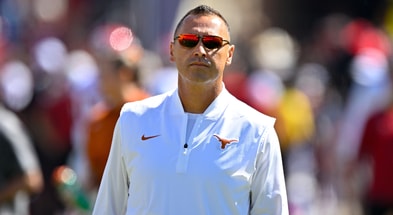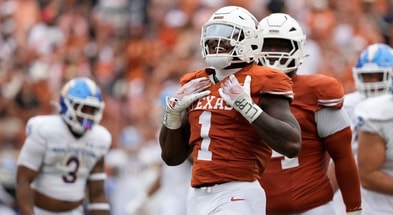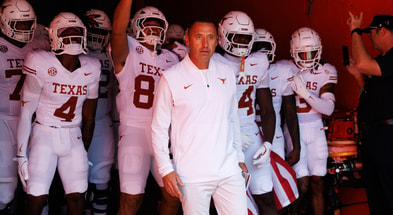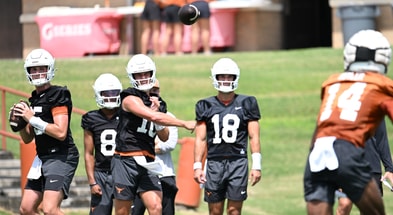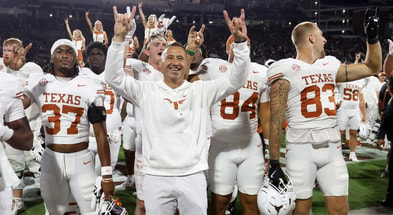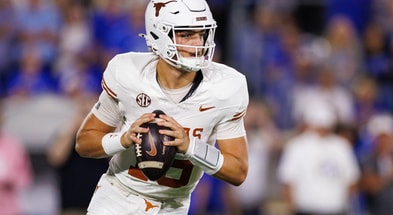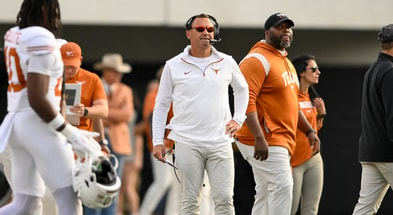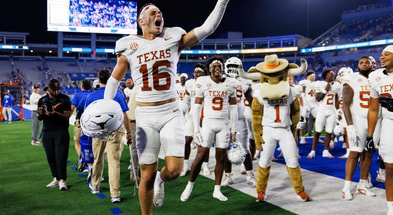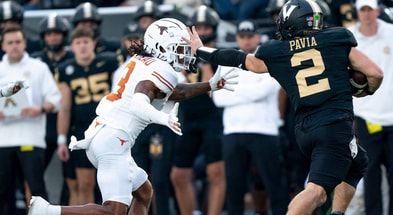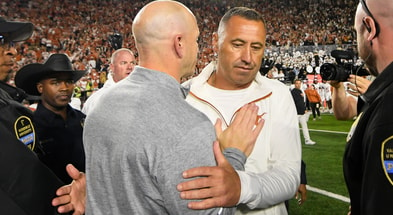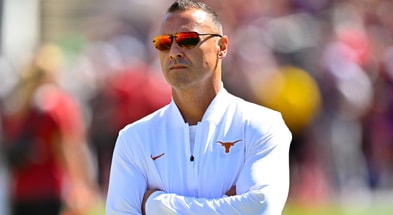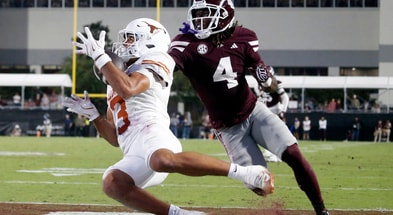Vanderbilt's offense is efficient, but manageable for the Texas Longhorns
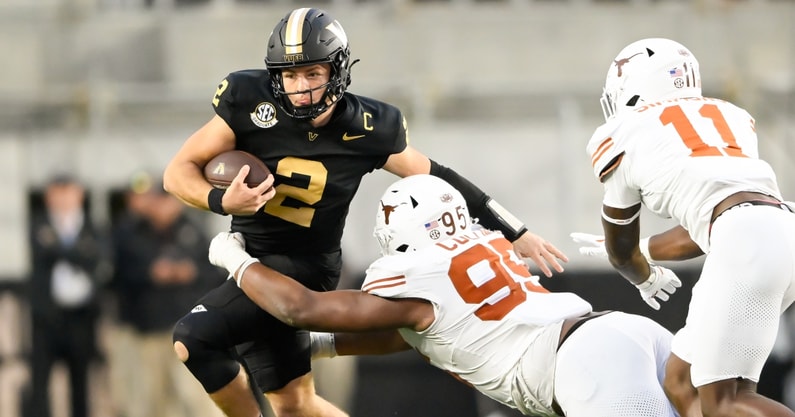
Vanderbilt has played three notable SEC teams in the last three weeks: a loss at Alabama, a win vs. LSU, and a win vs. Missouri—with the Tigers using a backup quarterback for the final four drives (he might’ve been better than Pribula anyway).
[Sign up for Inside Texas TODAY and get the BEST Longhorns coverage!]
We saw three extremely different game scripts.
LSU was a very favorable matchup for the Commodores—the kind of game they play for.
Vandy scored 31 points in nine total drives, all of which came from their first six. That’s 5.16 points per drive—an elite mark. LSU simply couldn’t stop them.
LSU was given two drives in the fourth quarter and needed to score 10 points. Instead, they lost 10 yards on six plays. That’s exactly the kind of game Vanderbilt wants: a lead going into halftime, 17 total drives between both teams, and a 10-minute time-of-possession advantage in the second half. They take early leads, control the clock, and ramp up the pressure late.
Against Missouri, it was a suboptimal game script, but they still won—another type of game they can handle.
They averaged just 3.7 yards per play on their first three drives, scoring zero points. Thankfully for them, Missouri’s offense was even worse. I could easily see this occurring in Austin, given how Texas has started some of its recent games.
It was a 3–3 ballgame until MK Young broke loose for an 80-yard run late in the third quarter. Vanderbilt had just 155 yards through 41 minutes of play. Missouri has a good defense, but Texas’ is better. Vandy was averaging only three yards per carry. Their only run over 10 yards before that was a 13-yard gain in the first quarter from Diego Pavia.
Missouri contained the ground game—something Texas also does well. Missouri pressured the quarterback—something Texas also excels at. Missouri kept Pavia in check on third downs with athletic, NFL-caliber edges like Damon Wilson. Texas has those, too.
That 80-yard run was the only reason Vanderbilt won. They had nothing going before it. They were playing a poor brand of football and should’ve lost to a team using a backup QB on the road. Missouri even tied the game late, but Vandy recovered a fumble and benefited from a roughing-the-passer penalty that helped them score the game-winning touchdown. They escaped more than they won.
Against Alabama, it started as déjà vu from last year. The Commodores forced a turnover and went up 7–0, with the ball in Alabama’s red zone. Worst case, they should’ve been up two scores entering the second quarter against a Bama team that had already crumbled to them in years past.
By all means, it was a disastrous start for Alabama—an interception and a missed field goal in the first quarter. And yet, you look up at the scoreboard, and they ended up winning by 16.
This is the third type of game script that can beat Vanderbilt, though it’s an unlikely one. Alabama completely dominated the second half. They escaped the first half tied, then outgained Vanderbilt by 107 yards in each team’s final four drives. It was another game limited to 17 possessions, but Alabama simply out-talented the Commodores.
All of this shows that Vanderbilt has played three very different types of football against tough SEC opponents. They got their ideal game script against LSU and comfortably controlled the second half after taking an early lead. That game felt like more than a seven-point win.
Against Missouri, they won, but it was ugly. Put Texas on that field last Saturday, and I’m confident the Longhorns win. Vanderbilt’s offense was stagnant, and they needed plenty of luck to escape with the victory.
Top 10
- 1New
Arch Manning
Texas decides status
- 2
Rhett Lashlee
SMU coach lands extension
- 3
Ashton Daniels
Auburn QB named starter
- 4
Jeremy Pruitt
Returns to college coaching
- 5Hot
Urban Meyer
Addresses return to coaching
Get the Daily On3 Newsletter in your inbox every morning
By clicking "Subscribe to Newsletter", I agree to On3's Privacy Notice, Terms, and use of my personal information described therein.
Against Alabama, they were simply outplayed and out-athleted. I’d love to give it more nuance, but that’s the truth. Alabama embraced Vanderbilt’s playstyle—and did it better.
Vanderbilt went 1–1 against Missouri and Alabama, but their offense averaged just 1.7 points per drive. That’s a 17-point offense based on their playstyle. They even ran the ball well against Alabama, averaging over seven yards per carry—but because the Crimson Tide scored efficiently, Vanderbilt’s running backs got only six carries.
This offense is efficient in the must-haves: great in the red zone, strong on third down, and careful with the football. But that approach can be exploited.
Alabama won the turnover battle +2. If Vanderbilt has that happen against Texas—a very capable takeaway team—they’ll really struggle to come from behind.
Another issue: while they’re excellent in the red zone, they rely heavily on goal-line scoring. Of their eight touchdowns in these three games, five came at the goal line, two were 60+ yard runs, and just one came from between four and 65 yards.
If Texas maintains its typical goal-line stand mentality—as it has against virtually everyone—Vanderbilt will need to find ways to score outside of one-off explosive plays and one-yard rushes.
As much as this offense may rank in the top 10 in efficiency metrics, it has clear flaws—and those flaws align with Texas’ strengths.
This Texas defense has multiple ways to win this game.
Win the turnover battle? You probably win—they force two per game.
Stop them at the goal line? You probably win—just look at the Kentucky, Clemson, or Texas A&M tapes.
Contain Pavia on third down and limit yards per carry? You’re probably winning that game too.
Hidden beneath all of Vanderbilt’s complicated offensive misdirection and motions is a simple game plan: outpossess your opponent and convert when it matters.
If Texas can disrupt that rhythm, this Vanderbilt team is going to struggle to reach 17 points.
